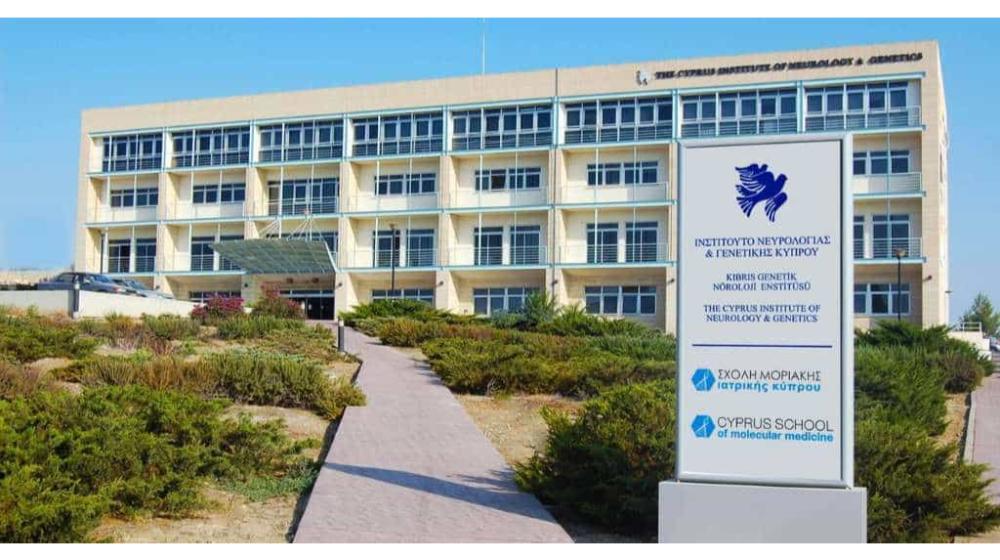A new research project at The Cyprus Institute of Neurology & Genetics (CING) aims to develop a one-time, curative therapy for the most common forms of thalassemia in Cyprus.
The Molecular Genetics Thalassaemia Department (MGTD) of CING announces the launch of a new research project, BETA-BET: Targeted Base Editing for Beta Thalassemia.
According to a CING press release, β-Thalassemia is a severe inherited blood disorder caused by mutations (errors) in the β-globin gene (HBB), which encodes a key component of hemoglobin – the protein responsible for transporting oxygen throughout the body. Individuals affected by the disease typically depend on lifelong blood transfusions to compensate for ineffective red blood cell production and to manage chronic anemia.
The 24-month project aims to advance a personalised gene therapy approach for the HBBIVSI-110 mutation, the most common cause of β-thalassemia in Cyprus. It is supported with a total budget of €198,828, funded by the Research & Innovation Foundation (RIF) and co-funded by the European Union and the Republic of Cyprus.
According to the press release, the BETA-BET project builds on the success of a previous RIF-funded research program, conducted in collaboration with George Papanikolaou Hospital, Aristotle University of Thessaloniki (Greece), and University of Freiburg (Germany), which provided the preclinical evaluation of these gene-editing tools in hematopoietic stem cells derived from individuals carrying two copies of HBBIVSI-110 mutation (HBBIVSI-110 homozygous). That study successfully showed that the gene-editing tools could efficiently correct the genetic mutation, restore the production of healthy red blood cells, and enable the corrected cells to survive and function long-term in preclinical murine models, outperforming other, nuclease-based approaches.
The new BETA-BET project focuses on two primary scientific aims. The first is to expand and validate the effectiveness of the cutting-edge "base editing" therapy for a much larger number of people living with β-thalassemia, referred to as 'compound heterozygotes. These individuals carry the HBBIVSI-110 mutation in combination with another mutation in the HBB gene.
Globally, compound heterozygotes are more than three times as common as those homozygotes for the mutation previously studied, underscoring the importance of this research, particularly in countries, like Greece and Egypt, where the HBBIVSI-110 mutation occurs at a relatively high frequency (above 19%). Base editing technology works like a tiny, “biological” pencil and eraser, precisely targeting the exact spot in the DNA where a “single-letter typo” occurs. It can erase the mistake and rewrite the correct “letter”, restoring the normal sequence. Unlike older methods, this advanced approach does not cut the DNA, making it much safer form of gene therapy. By demonstrating the treatment’s effectiveness in a broader patient group, the project aims to expand its clinical applicability and offer a potential cure to a large number of people living with thalassemia in Cyprus and around the world.
The second aim is to develop a new delivery system using 'engineered virus-like particles' (eVLPs). These eVLPs act like microscopic delivery drones, designed to carry the gene-editing tools directly to the blood-producing stem cells. Establishing this platform is a critical first step towards creating future therapies that could be given directly to the individual as a simple injection, potentially avoiding the complex, costly and harsh process of removing, editing, and returning cells to the body.
"The BETA-BET program is a crucial step toward a potential cure for the majority of people living with thalassemia. By expanding the therapy’s reach and pioneering new delivery methods, this research brings a personalized, one-time treatment closer to reality," the press release reads.
The project officially commenced on June 1st, 2025 under the coordination of Dr. Petros Patsali, Associate Scientist at MGTD, alongside Dr. Carsten W. Lederer (Head of Department), Dr. Nikoletta Papaioannou (Postdoctoral Researcher) and Dr. Panayiota Papasavva (Hematologist, Clinician-Researcher). The project brings together a powerful consortium of national and international collaborators, including Dr. Soteroula Christou (State Health Services Organization’s Thalassaemia Clinic, Cyprus), Prof. Dr. Toni Cathomen (University Medical Center Freiburg, Germany), Dr. Annarita Miccio (Imagine Institute of Genetic Diseases, France), and Dr. Maria N. Dimopoulou (Laiko General Hospital Athens, Greece).
(Source: CNA)









